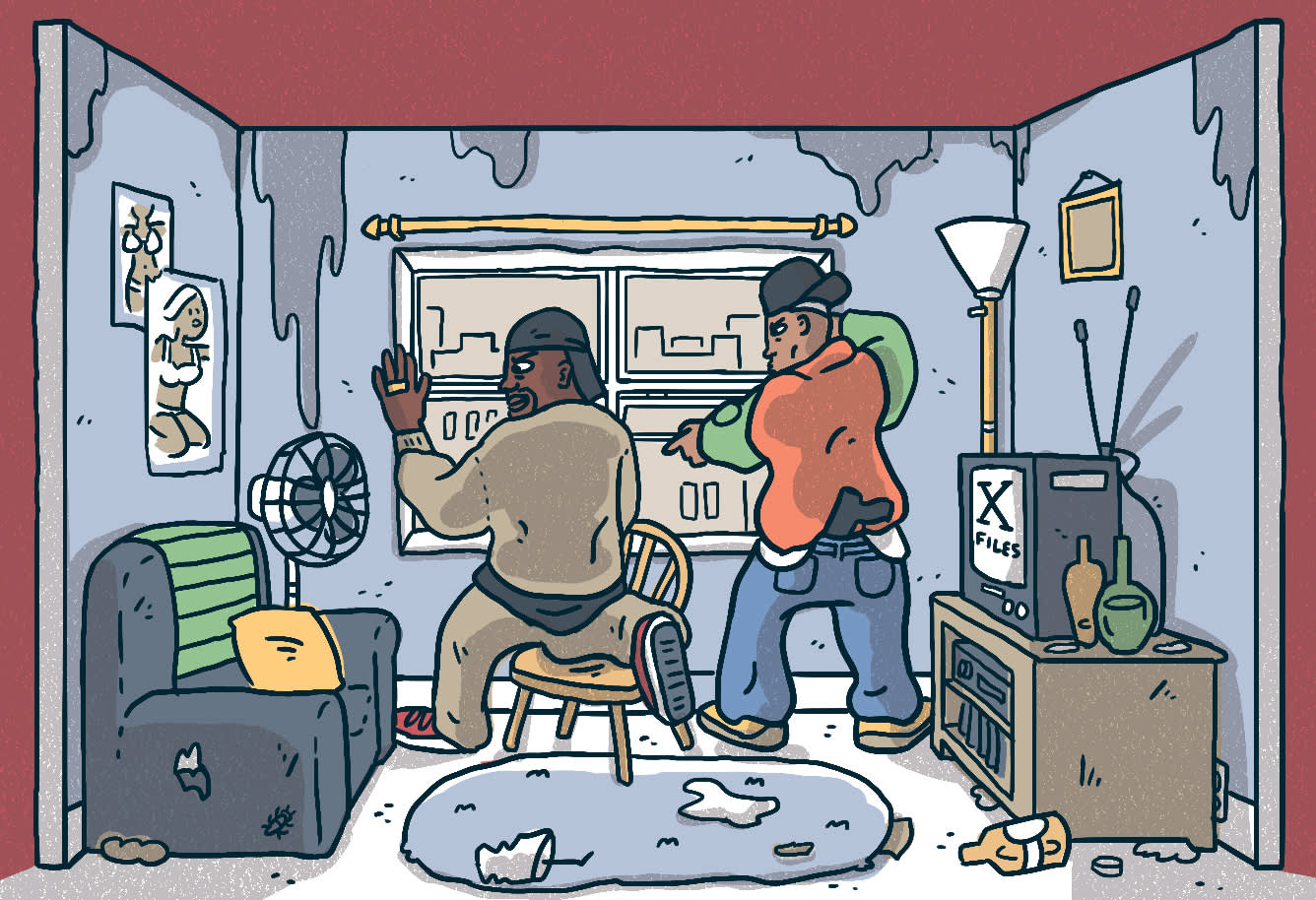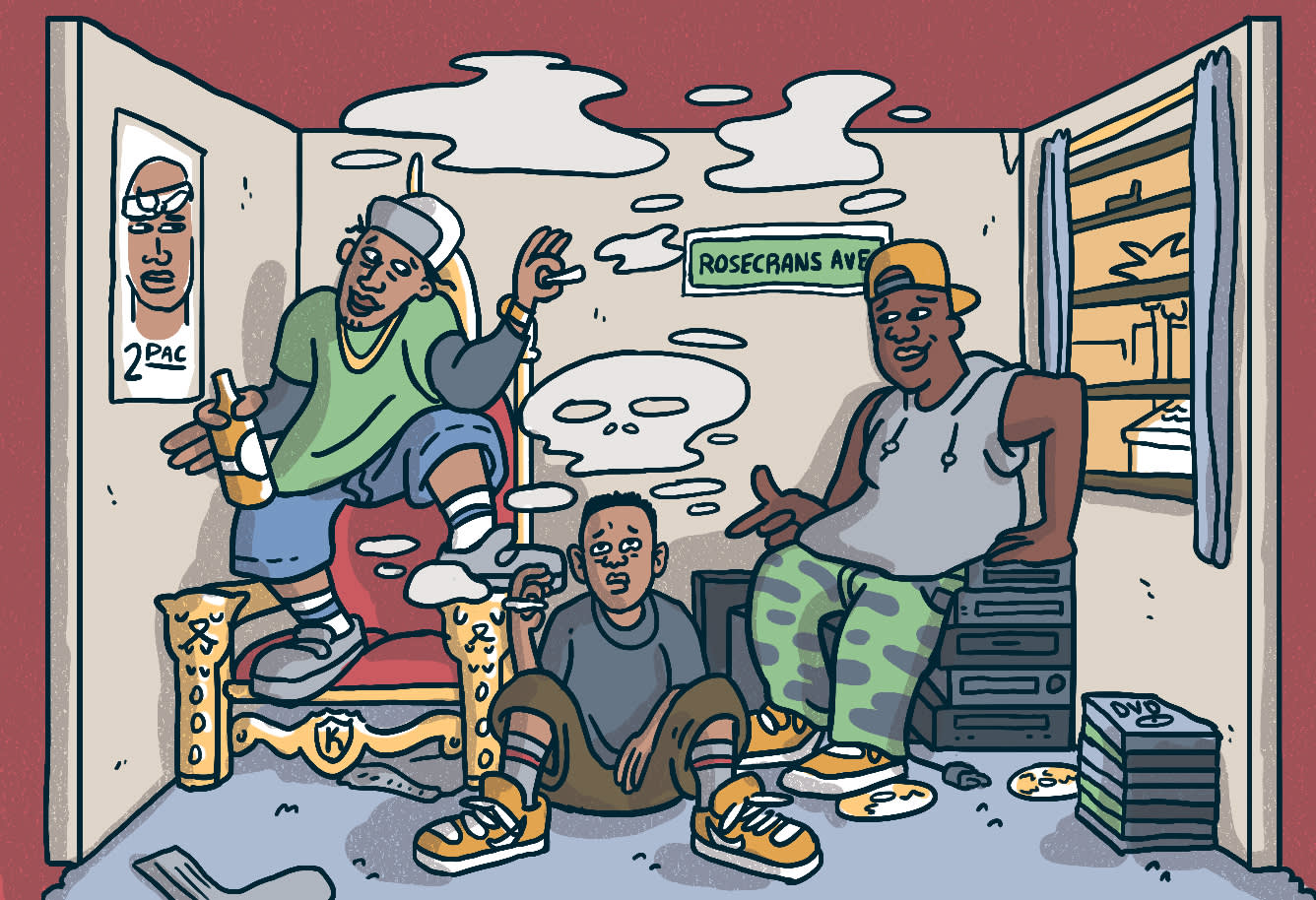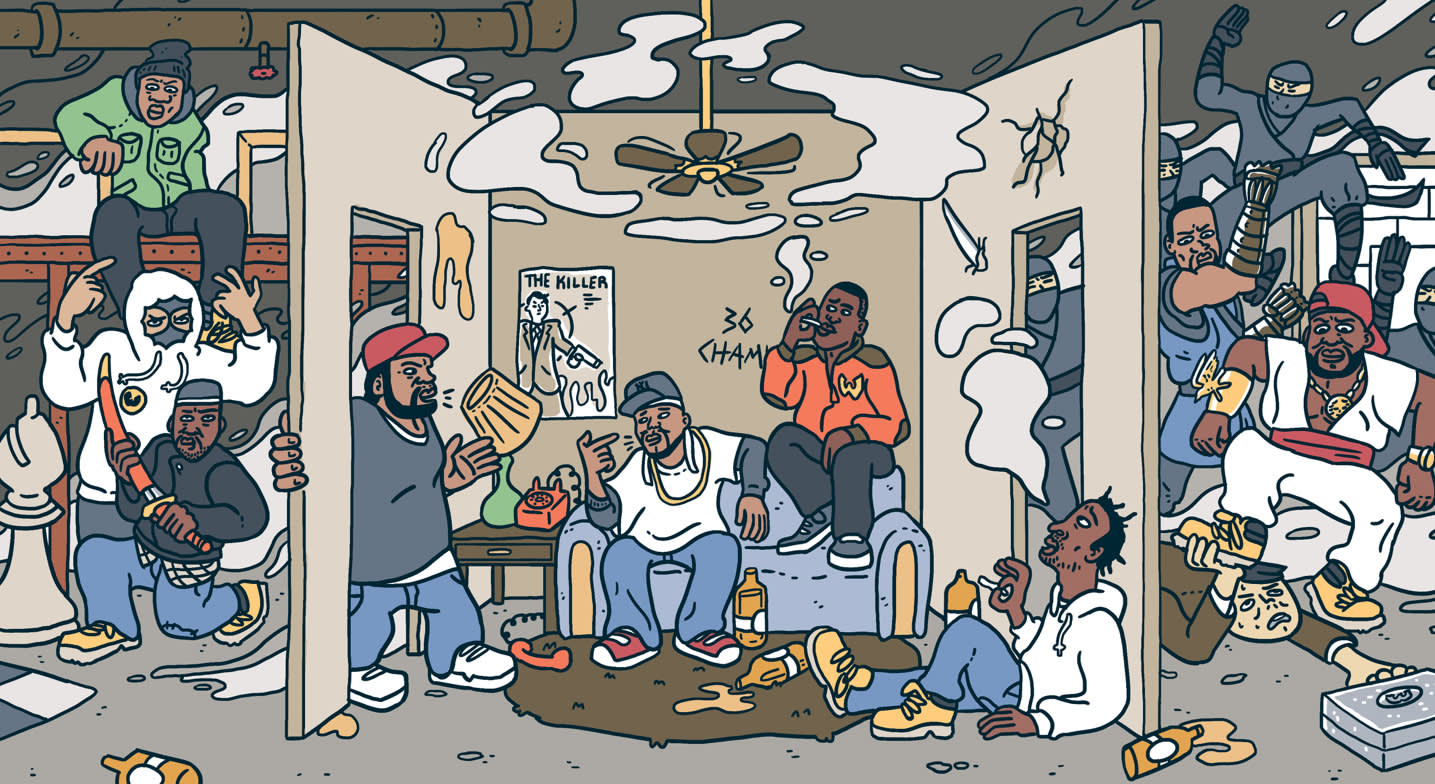The heyday of the hip-hop skit isn’t coming back any time soon.
In the 1990s and early ’00s — that era of ambitious major-label concept albums whose extreme length helped justify rising prices — the skit was an interstitial building block deployed to make the music hit harder, or simply to lighten the mood. Low-stakes and often seemingly improvised, these were an MC’s place to showcase a goofy sense of humor, pop-cultural dexterity, or unfiltered braggadocio — and just as often an arena for terrible accents, broad stereotypes, and misogyny. The skit was never loved. But, for a time, it was tolerated.
In exploring the narrative and comic possibilities of the segue, the album skit took many forms. But in every instance it served to highlight hip-hop’s historical connection to a long tradition of African-American oral storytelling, one that included ghost stories, tall tales, sermons, and performative “toasts.” And by expanding the backstory (or backstage antics) of the album’s larger-than-life performers, skits encouraged listeners to invest in the notion of the album as not just a collection of songs, but an atmosphere.
The best skits were experiments in audio storytelling that owed a debt to both the Marx Brothers and Orson Welles’ “War of the Worlds.”
Chuck D once said that “rap music is the invisible TV station that Black America never had,” for its ability to communicate blunt truths through beats and texture. On epic, milestone records like Wu-Tang Clan’s Enter the Wu-Tang (36 Chambers) or Mobb Deep’s The Infamous, the nonmusical segments helped build a cinematic world, using the spaces between the songs to contextualize the violent milieu from which the music provides a transcendent escape. Movie-obsessed Wu-Tang member Raekwon turned a missing John Woo videotape into an episodic audio gangster flick, and the hardcore duo Mobb Deep established that those living the “cradle to the grave” lifestyle ran the risk of getting shot on the block. The music was always the main attraction, but on these albums it also soundtracked an intricate, expansive audio movie — one that contained plenty of easter eggs to reward the obsessive listener.

Just as memorably, skits served as a forum for amateur sketch comedy, a Saturday Night Live of the streets. Playing the same track over and over, you could learn to imitate your favorite rappers (and their multiple personas) even if you didn’t understand the joke. Skits generally don’t age well, but they are meme generators; the best of them continue to reverberate down through the ages, endlessly quotable. On Dr. Dre’s The Chronic, Warren G ended a prank call with a punchline of “Deez Nuts!” This year, Deez Nuts ran for president. Wu-Tang’s “torture” sketch is too harrowingly imaginative and over the top to be forgotten; it inspired a Chappelle’s Show bit, and almost certainly continues to inform schoolyard taunts. I can’t listen to Nicki Minaj without thinking of Missy Elliott’s array of accents.
The best skits were experiments in audio storytelling that owed a debt to both the Marx Brothers and Orson Welles’ “War of the Worlds.” They used crisp, vivid sonic detail to become funnier (or scarier) for what listeners couldn’t see. Skits let rappers indulge a talent for play-acting and Pacino-style posturing, but sometimes were more real than real. Biggie Smalls was genuinely receiving oral sex in the “Respect” skit on Ready to Die.
The border between spoken-word and hip-hop cadence is a porous one — and the best skits are scrutinized on RapGenius with the same Talmudic intensity devoted to songs. Sometimes, the skits were the commentary on the songs: in a series running through De La Soul’s De La Soul is Dead, a gang of bullies steal a De La cassette (from a kid who found the thing in a trash can) and offer brutal critiques of what they hear. It’s a postmodern gambit that belongs to a literary tradition dating back to Don Quixote and Tristram Shandy.
It’s not difficult to divine the reasons for the decline of the skit. Once the cassette fully gave way to the skip-friendly CD, and the MP3 arrived to decouple the song from the album, artists had less incentive to stretch their LPs with comic filler. Sequencing began to matter less. The broadband era arrived to throttle listeners’ attention spans (and the capacity to sit through yet another fake game show or local news report) and offered new windows for experiencing quotidian hip-hop culture. The energy of the funniest skits thrives on Vine and Snapchat, and beefs are carried out on Twitter.
Once the cassette gave way to the skip-friendly CD, and the MP3 arrived to decouple the song from the album, artists had less incentive to stretch their LPs with comic filler.
Kanye West’s early albums were bloated by skits and guest appearances — remember comedian DeRay Davis (impersonating Bernie Mac) introducing College Dropout? “Kanye’s Workout Plan?” — but he ditched them entirely for the focused assault of Yeezus. Drake has little use for the skit in its most orthodox form, but the “are you drunk right now?” refrain of “Marvin’s Room” is a clear descendant of the golden age of the skit, in which fake answering-machine messages were a familiar trope.
Another series of voicemail messages informs the emotional texture of Kendrick Lamar’s mainstream breakthrough, good kid, m.A.A.d city. Over the course of the album, Kendrick’s mother calls intermittently to check in on her son’s well-being, to offer praise and advice, and to remind him to bring back the van he borrowed. At one point, his dad cuts in to demand that Kendrick retrieve his order from Domino’s. The ambitious autobiographical record billed itself as “A Short Film by Kendrick Lamar,” and indeed, it constructs an easily discernible three-act narrative — taking place over the course of a single day — with memorable characters and vivid trajectories and a heart-wrenching climax. The lyrics are specific about South L.A. freeways and Compton street names, giving listeners the sense of watching a movie “shot on location.” Good kid generated radio-ready singles like “Swimming Pools (Drank)” and “Bitch Don’t Kill My Vibe,” but the songs owed much of their gravity to the album’s sequencing, its sense of dramatic momentum, and a carefully considered array of interludes.
Lamar is a philosophical, forward-thinking artist who projects a sense of respect for old-school tradition, and his powerful albums suggest that the skit format has not been milked for all that it’s worth. In an interview with XXL Mag, Lamar described his initial confidence — and later ambivalence — about using the technique to place himself in a greater tradition. “I’ma go back and do the skits just like how Biggie and Dre and Snoop and ‘Pac did it,” he told himself. “Then I wrapped up with it and said, ‘Man, what’s on the radio right now? I don’t think they doin’ skits and things like that.’”

Lamar’s 2015 follow-up To Pimp a Butterfly, easily the most critically acclaimed and widely discussed album of last year, reverently revisits and repurposes a wide swath of African-American musical history. Ambitiously conceived, the album doesn’t divide neatly into catchy singles and thematic connective tissue — it sustains its intensity over the course of 80 minutes through a freeform promiscuity. The songs are skits, the skits are songs. To Pimp a Butterfly is a record dominated by voices — many, but not all of them, Kendrick’s own.
“Mortal Man,” the 12-minute valedictory track of Butterfly, ends with an audacious and powerful conceit — a supernatural “skit” that puts Lamar in conversation with the late Tupac Shakur, whose comments are taped snippets from a 1994 interview. It’s a risky, seemingly cocky gesture on Lamar’s part, positioning himself as a descendant of one of the greats when the slain elder has no say in the matter. But in practice, the conversation is moving, topical, engagingly open-ended and full of mutual respect. Kendrick is mainly there to ask questions — about faith, opportunity, and the politics of black manhood — and listen to the answers.
At the end, Kendrick presents Tupac with a prose poem written by a friend, a parable about a caterpillar and a butterfly. Though they couldn’t look more different, they are also, in a sense, the same creature. He asks Tupac for his perspective, but for the first time, his elder does not answer. Instead, the album leaves its questions pointed outward at the listener. In “Mortal Man,” Lamar exploits the inherent theatricality of hip-hop to find an almost utopian ideal for a tired, largely jokey format. Skit, interlude, segue, coda: a place to share the ideas that take root where the music stops.




